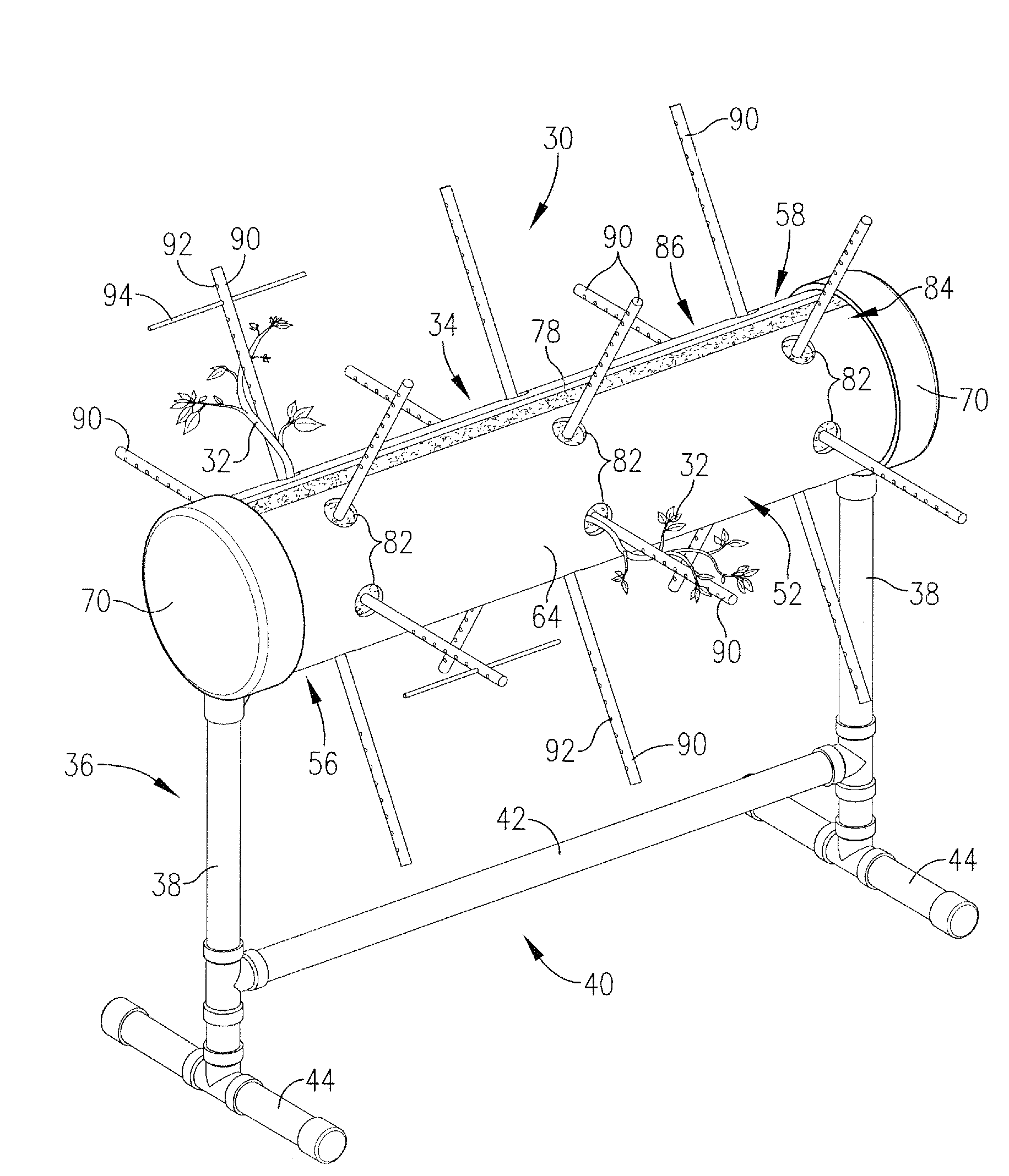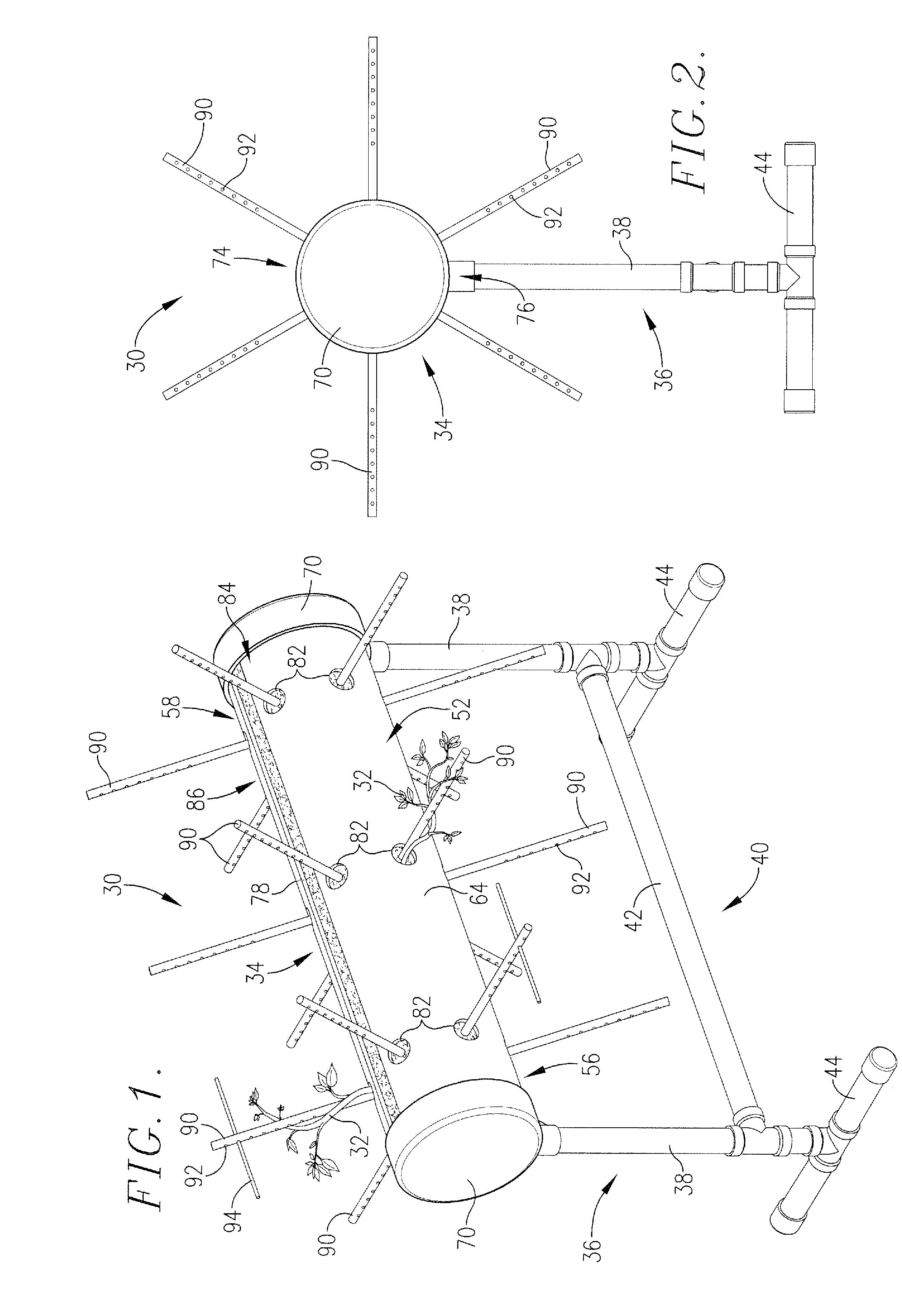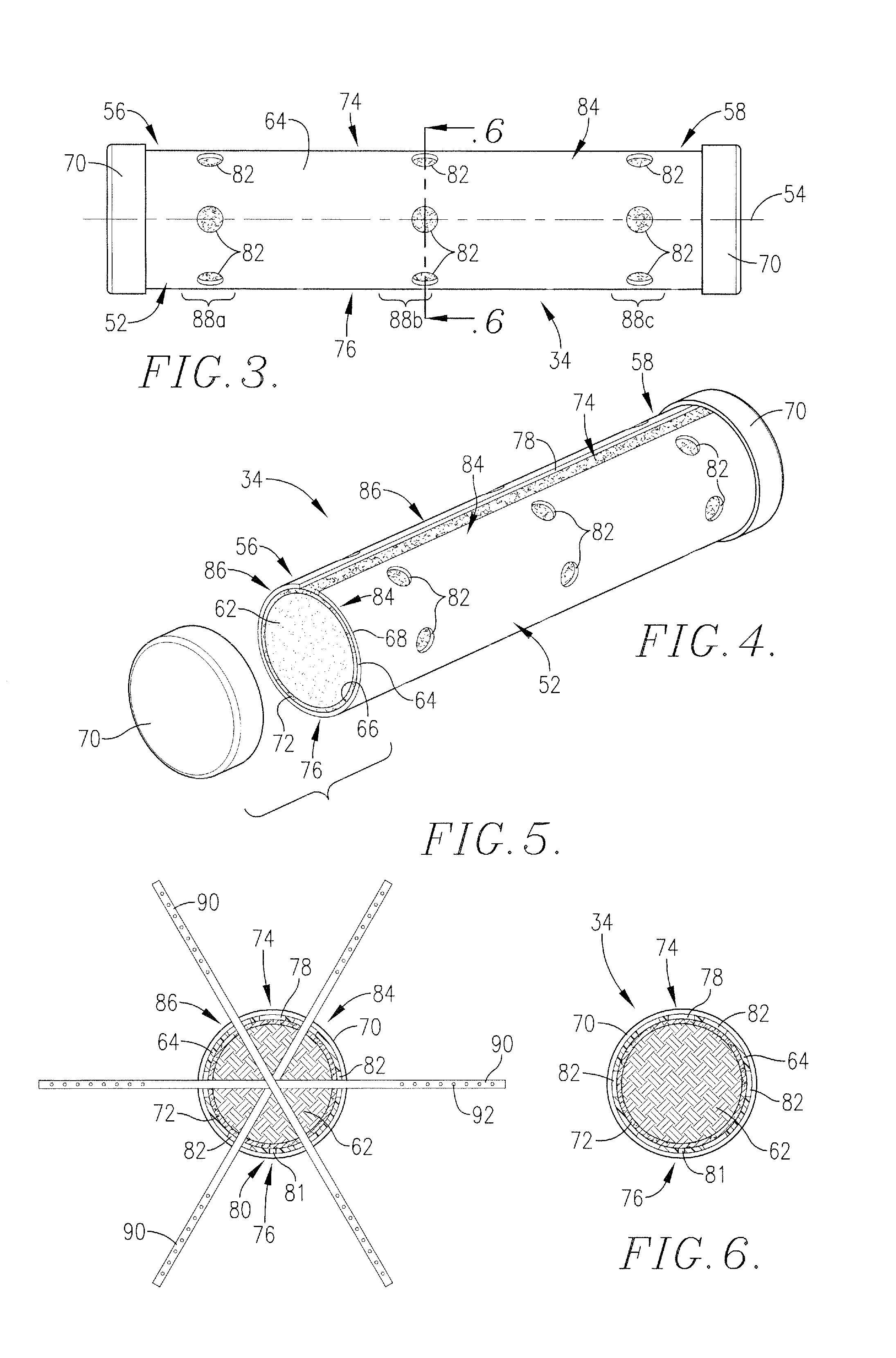Method and apparatus for growing plants
a technology for growing plants and plants, applied in the field of plant growing assembly, can solve the problems of limiting the number of plants, presenting drawbacks, and the amount of land dedicated to the growing of plants, and achieve the effects of less water, less work, and avoiding oversaturation
- Summary
- Abstract
- Description
- Claims
- Application Information
AI Technical Summary
Benefits of technology
Problems solved by technology
Method used
Image
Examples
Embodiment Construction
[0044]The present invention is susceptible of embodiment in many different forms. While the drawings illustrate, and the specification describes, certain preferred embodiments of the invention, it is to be understood that such disclosure is by way of example only. There is no intent to limit the principles of the present invention to the particular disclosed embodiments.
[0045]With initial reference to FIGS. 1 and 2, a plant growing assembly 30 constructed in accordance with the principles of an embodiment of the present invention is depicted for growing a plurality of plants 32 above a ground surface and in generally opposite directions. The plant growing assembly 30 broadly includes a plant growing container in the form of a first growing tube 34 and a supporting structure in the form of a freestanding growing tube support structure 36.
[0046]The freestanding growing tube support structure 36 depicted in FIGS. 1 and 2 includes a pair of upstanding legs 38 and a ground surface-engagi...
PUM
 Login to View More
Login to View More Abstract
Description
Claims
Application Information
 Login to View More
Login to View More - R&D
- Intellectual Property
- Life Sciences
- Materials
- Tech Scout
- Unparalleled Data Quality
- Higher Quality Content
- 60% Fewer Hallucinations
Browse by: Latest US Patents, China's latest patents, Technical Efficacy Thesaurus, Application Domain, Technology Topic, Popular Technical Reports.
© 2025 PatSnap. All rights reserved.Legal|Privacy policy|Modern Slavery Act Transparency Statement|Sitemap|About US| Contact US: help@patsnap.com



